Skip to main contentSkip to footer![A group of thirteen enthusiastic DKMS volunteers pose together at the Poland Rock Festival 2023. They are standing and kneeling around a chalkboard that announces the number of new potential donors registered. The atmosphere is joyful and happy, with cloudy skies in the background. A group of thirteen enthusiastic DKMS volunteers pose together at the Poland Rock Festival 2023. They are standing and kneeling around a chalkboard that announces the number of new potential donors registered. The atmosphere is joyful and happy, with cloudy skies in the background.]()
![A world map highlighting the countries in red, where DKMS is represented. Germany, Poland, the UK, India, South Africa, US and Chile are marked in red. Red lines connect the continents and countrys, symbolizing global collaboration. The text reads: '14 entities for one mission.' A world map highlighting the countries in red, where DKMS is represented. Germany, Poland, the UK, India, South Africa, US and Chile are marked in red. Red lines connect the continents and countrys, symbolizing global collaboration. The text reads: '14 entities for one mission.']()
![A scientist of the DKMS Life Science Lab, wearing glasses, a light blue lab coat and purple gloves, uses a pipette to transfer liquid into a small test tube in a bright laboratory. A scientist of the DKMS Life Science Lab, wearing glasses, a light blue lab coat and purple gloves, uses a pipette to transfer liquid into a small test tube in a bright laboratory.]()
![A scientist of the DKMS Stem Cell Bank, wearing a white lab coat and blue cryogenic gloves, handles a metal rack with cryopreserved unoriented peripheral blood stem cells emerging from a cryotank filled with vapor in a sterile lab setting. These cells are also called Adult Donor Cryopreserved Units (ADCUs). The scientist's face is not visible. A scientist of the DKMS Stem Cell Bank, wearing a white lab coat and blue cryogenic gloves, handles a metal rack with cryopreserved unoriented peripheral blood stem cells emerging from a cryotank filled with vapor in a sterile lab setting. These cells are also called Adult Donor Cryopreserved Units (ADCUs). The scientist's face is not visible.]()
![A young male donor, wearing a khaki-colored shirt and gray sweatpants, is lying comfortably on a medical chair, smiling at the camera while donating stem cells through peripheral blood stem cell (PBSC) donation. He is connected to an apheresis machine via tubes, and holding a red squeeze ball in his hand to support blood flow. In the background parts of windows can be seen. A young male donor, wearing a khaki-colored shirt and gray sweatpants, is lying comfortably on a medical chair, smiling at the camera while donating stem cells through peripheral blood stem cell (PBSC) donation. He is connected to an apheresis machine via tubes, and holding a red squeeze ball in his hand to support blood flow. In the background parts of windows can be seen.]()
![Five Chilean medical professionals pose together in front of a bright yellow wall structure inside a modern clinic in the Donor Center in Chile. The three women are sitting in the middel, and the two men are standing on either side. They are wearing white and dark blue medical scrubs and shirts, smiling warmly. Five Chilean medical professionals pose together in front of a bright yellow wall structure inside a modern clinic in the Donor Center in Chile. The three women are sitting in the middel, and the two men are standing on either side. They are wearing white and dark blue medical scrubs and shirts, smiling warmly.]()
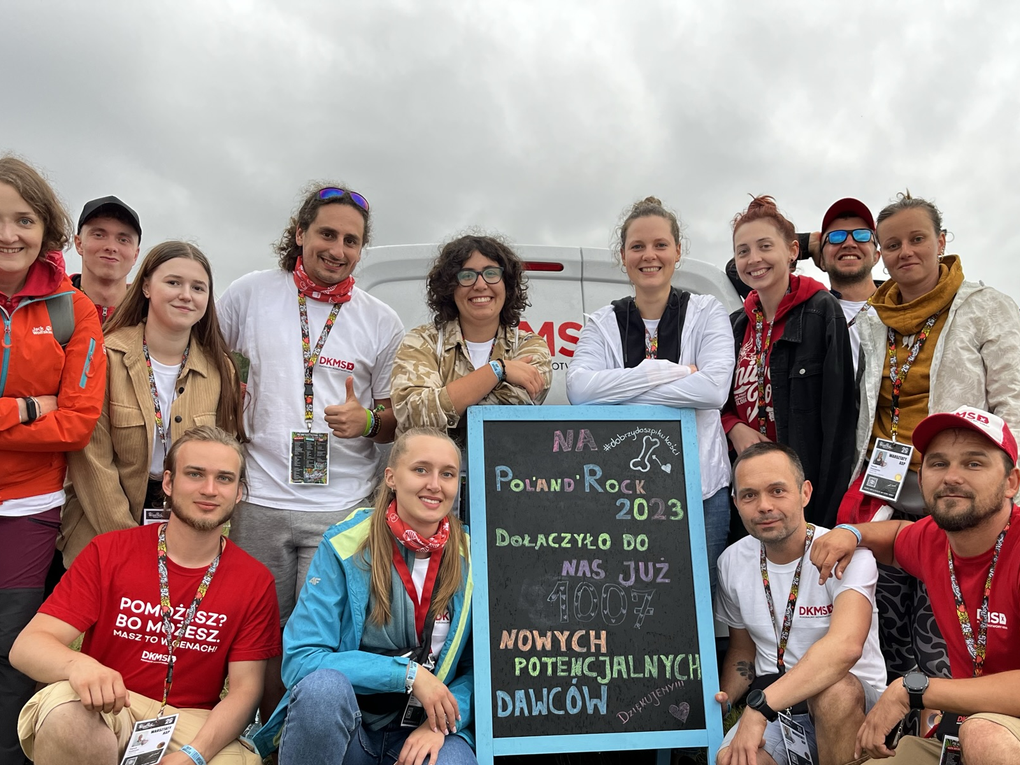
Our Structure
DKMS family worldwide
Five continents, seven countries, fourteen entities for one mission
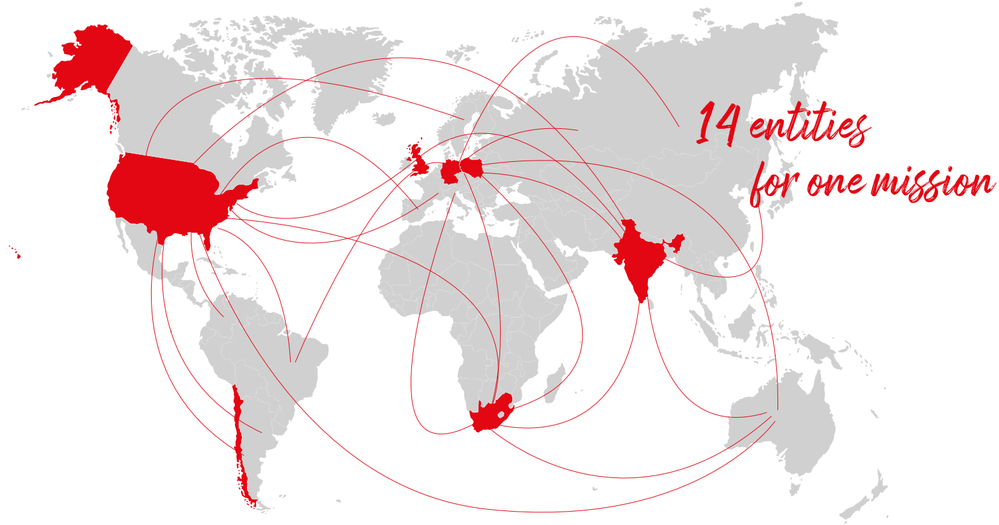
Our Donor Centers
Our Donor Centers are the backbone of our operations. Each entity in the seven countries runs a team of donor recruiters, corporate communications and marketing, as well as medical teams and colleagues who accompany donors during the donation process.
The work of our Donor Centers covers awareness campaigns, as well as the organization of donor recruitment events to recruit more people and register them as potential donors. Instead of waiting for people to find us, we go to where they are, setting up registration events at festivals, in schools, workplaces, football stadiums…and online! Our Donor Centers worldwide account for around 700,000 registrations per year. This is important, as every year people are removed from the database due to age limitations. Donors are only eligible to donate between the age of 18 and 61 - which is why at DKMS we recruit donors until the age of 55.
Find out more about our various Donor Centers on their respective websites:
DKMS Registry
Finding the best possible donor for patients - worldwide
Operating as a nonprofit subsidiary of DKMS, the DKMS Registry actively supports transplant centers, facilitates international collaboration, and continuously expands its diverse donor pool to improve patient outcomes.
Further information
The DKMS Registry:
- Creates an ethnically diverse donor pool spanning five continents.
- Actively aids patients and transplant centers in countries without national registries.
- Provides assistance to transplant centers in India, Chile, South Africa, and Colombia.
- Conducts searches in both DKMS and worldwide donor pools.
- Collaborates internationally to ensure seamless access to donors across borders.
- Offers consistent, quality-based service to partners in the transplantation journey.
When a patient in need of a blood stem cell transplant does not find a matching donor within their family, their treating physicians in the transplant clinic can search the worldwide network of stem cell donor registries for a matching unrelated donor. These country-specific registries manage databases in which all registered potential blood stem cell donors worldwide can be found, along with their HLA characteristics. Their data is pseudonymized beforehand, so that it is not possible to draw any conclusions about the donor beyond their HLA characteristics during the search.
To further improve and accelerate this search process, we founded the DKMS Registry as an independent and international subsidiary of DKMS. DKMS donors from Chile, Germany, India, South Africa and UK are listed by the DKMS Registry for international requests. Furthermore, the quality of our donor profiles and information exceed the general standard. This enables transplant clinics to search for the genetic twin of their patient even more precisely - because the more suitable the match, the greater the chance of long-term success of a blood stem cell transplant.
We collaborate internationally with registries and transplant centers to ensure access to donors across international borders. Therefore, we strive to provide a consistent and quality-based service to all of our partners at every step of the transplant journey.
More about DKMS Registry
DKMS Life Science Lab
The DKMS Life Science Lab analyzes cheek swab or blood samples from potential blood stem cell donors from all over the world. Around 7,000 samples from DKMS donors can be examined there every day. After registration of a blood stem cell donor our lab analyzes the samples for 24 tissue characteristics - also known as HLA characteristics - in high resolution, as well as a number of other markers. This is referred to as tissue typing.
Further information
DKMS's Life Science Lab - the world's most innovative and most efficient HLA typing laboratory - carries out typing according to the latest scientific standards, continuously expanding its typing profiles to ensure effective donor matching and further improve the chances of survival for patients. The donor's data is stored under a pseudonymous ID and can be accessed by transplant centers worldwide. The lab is accredited by the EFI (European Federation of Immunogenetics) and the ASHI (American Society for Histocompatibility and Immunogenetics) and our highly qualified staff includes internationally recognized specialists in genotyping and related technologies.
DKMS also has its own clinical search unit, accredited by Central Bone Marrow Donor Registry in Germany (ZKRD). As part of the DKMS Life Science Lab, the clinical search unit conducts unrelated donor searches for patients around the world, as well as searches amongst family members for individual patients. With years of experience and access to a global network, our search unit filters potentially suitable donors quickly and reliably.
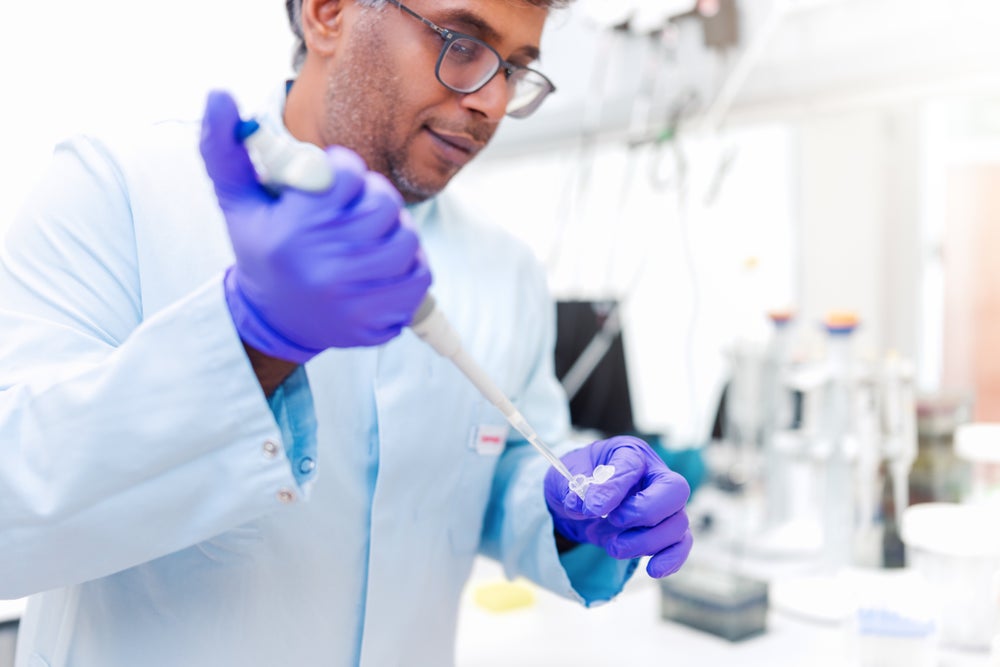
More about DKMS Life Science Lab
DKMS Stem Cell Bank
Originally established and still operating as a cord blood bank, our DKMS Stem Cell Bank is the first facility in the world which makes cryopreserved peripheral blood stem cells available for unrelated stem cell transplantation.
We ask some of our donors who are already donating for a specific patient for a second donation that will be cryopreserved, or frozen, in our Stem Cell Bank.
This way, our donors can save two lives with one donation and patients can receive help faster, as the process of the donation already took place.
We aim to provide our cryopreserved cells (ADCUs: adult cryopreserved units) to transplant centers worldwide to help patients even more quickly and efficiently.
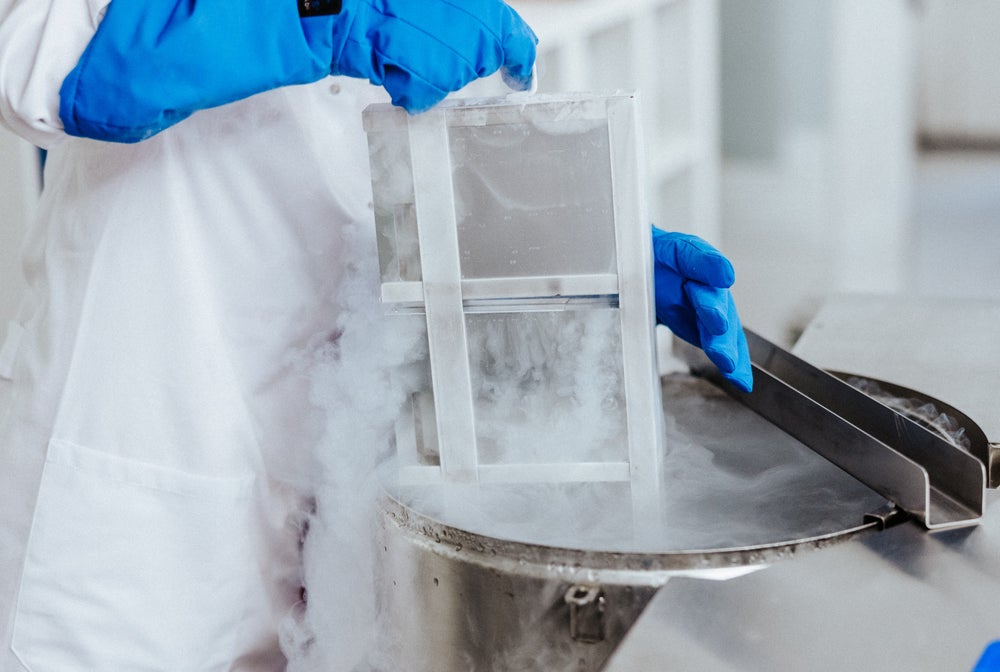
More about the work of the Stem Cell Bank
DKMS Collection Centers Germany
Our Collection Centers in Cologne and Dresden (Germany) take care of the safety and well-being of all donors and ensure product quality at all times. They are run by experts in the field of stem cell donation. They look after DKMS donors and guide them successfully through their preliminary examinations and actual stem cell donations.
Both bone marrow and peripheral blood stem cell collections can be performed. The type of donation depends on the treatment of the patient and any medical indications on the donor's side. We also collect lymphocytes for the patients' further treatment.
Their goal is to provide the best possible service to our donors while delivering high-quality cell transplants to patients that are treated in transplant centers worldwide.
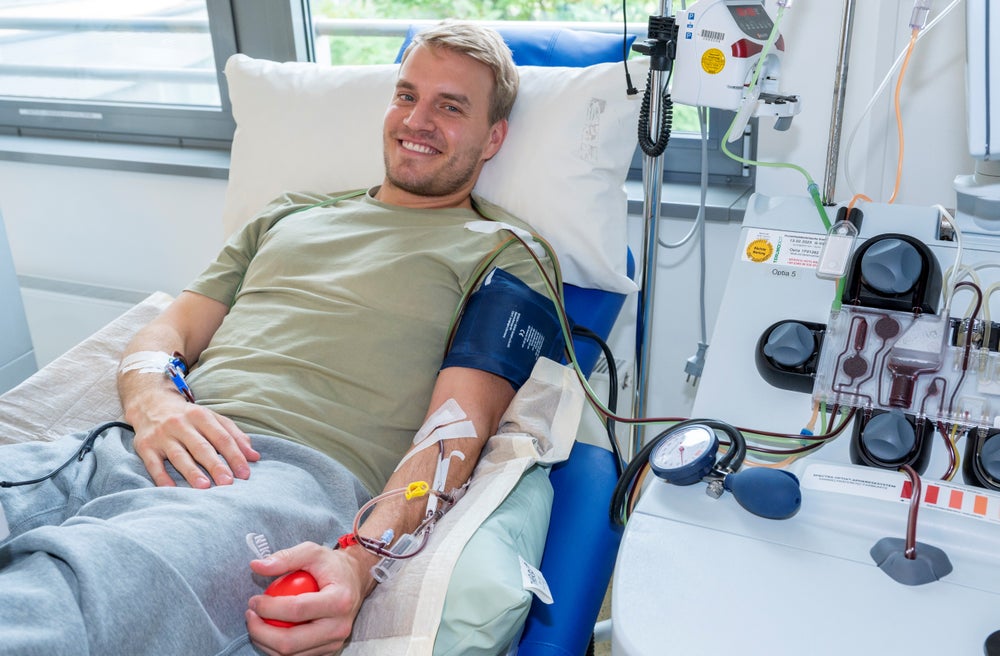
More about the DKMS Collection Centers Germany
DKMS Collection Center Chile
Increasing transplant capacity
Since 2024, DKMS Chile runs its own blood stem cell collection center for apheresis (peripheral collection) donations, as a further step in helping to increase the country's transplant capacity and improve access to treatment for blood cancer patients.
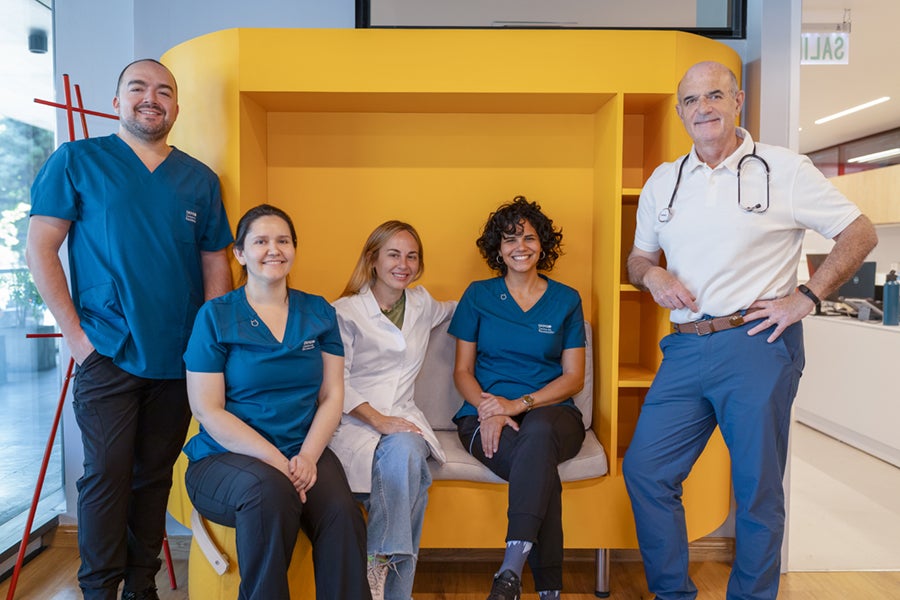
More about DKMS Collection Center Chile











